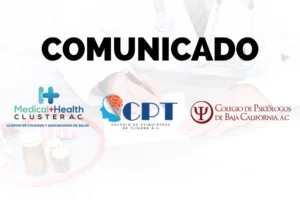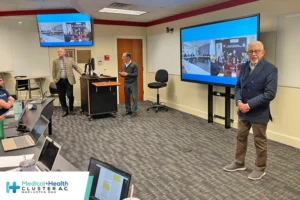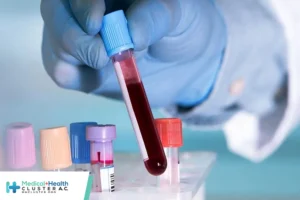En atención a la creciente preocupación sobre la confianza en...
Leer más
How COVID-19 Affects the Brain, With a Cameo by Dr Fauci

This year’s American Academy of Neurology (AAN) Annual Meeting, which was held virtually, devoted the entire “Hot Topics” Plenary Session to the COVID-19 pandemic. The keynote address featured Dr Anthony S. Fauci, who needs no introduction, and Dr Walter J. Koroshetz, director of the National Institute of Neurological Disorders and Stroke (NINDS).
AAN Science Committee Chair Natalia S. Rost, MD, MPH, and Paul M. George, MD, PhD, MSE, moderated the discussion. Following the keynote, the presentations could not have been more relevant to neurologists practicing during a pandemic. There was a review of COVID-19 neurologic symptoms and also a look at healthcare disparities related to the virus. Next was a review of post-acute COVID-19 neurologic syndrome, and then an exploration of vaccination and immunization.
Back to Normal?
Fauci, who is now chief medical officer to President Joe Biden, observed that the pandemic is “historic in proportions if you look at the impact that this has had on the entire planet.” With 53,000 daily infections, there is a long way to go. However, Fauci reassured the audience: “I do think we will get back close to the pre-pandemic normal.”
One of the enduring consequences of the pandemic, he believes, will be a change in how we handle seasonal respiratory diseases. “There will be a lot more people wearing masks in the winter” as occurs in Asian countries, he predicted.
Koroshetz addressed potential vaccine toxicity, which has been a significant obstacle preventing universal vaccination. Apart from rare cases of postvaccination Guillain-Barré syndrome, “we don’t have any real concerns about the COVID-19 vaccine being any different,” he said.
Morbidity and Mortality
Fauci had more questions than answers regarding the wide-ranging response to the virus between the younger and older age groups. While those with comorbidities and advanced age are clearly at increased risk for severe disease, some younger people also become critically ill. “Most diseases that have the potential to kill, as COVID-19 does, make at least most of the people sick. I’ve never seen anything that has these types of disparities,” he said. Fauci suggested that underlying immunity, the density of ACE2 receptors, or other factors may be responsible. “That to me is one of the most exciting areas of research.”
Does COVID-19 Affect the Brain?
Koroshetz observed that COVID-19 does not appear neurotropic, although it does infiltrate nasal mucosa. Whether the virus invades the brain, as some data from Germany suggest, is controversial, while most researchers have failed to find evidence of central nervous system infection.
He explained that while the SARS-CoV-2 virus may not directly affect the brain, it does affect vital systems that support the brain, which results in neurologic symptoms. For example, encephalopathy is very common, and some people even present with delirium. Guillain-Barré syndrome, acute necrotizing encephalitis, and transverse myelitis may also rarely occur.
Healthcare Disparities
Fauci observed that the pandemic highlighted the “very disturbing health disparities in our society.” Not only do people of color have a higher rate of infection, but they also tend to suffer more severe outcomes due to a higher prevalence of comorbidities.
He also emphasized that the President has stressed that “equity in this disease is critical.” The Biden administration has taken measures to ensure that minority populations have easy access to vaccination. These include offering vaccines in community centers, stocking vaccines in pharmacies in minority neighborhoods, and dispatching mobile vaccination units.
“What we are hoping,” added Fauci, “is that when this is all over, we will pay attention to these social determinants of health that have led to these disparities.”
Post-Acute Sequelae of COVID Syndrome
Co-moderator Rost asked about the newly coined post-acute sequelae of COVID syndrome (PASC). Symptoms include abnormal sensations, dysautonomia, fatigue, memory and attention problems, postural orthostatic tachycardia, sleep disorder, and pain syndromes.
Koroshetz observed, “The percentage of people [with PASC] could be below 10%, but given the fact that there are so many millions of people affected, that’s going to be a lot of people.” He relayed the good news that Congress granted “considerable amount of funding to do very ambitious research” regarding how to improve recovery from COVID-19. Due to “incredible parallels between the cluster of symptoms” between the mysterious chronic fatigue syndrome and COVID-19, this research might also help those with that complex condition.
Masks and Vaccination
Co-moderator George queried the rationale behind the official recommendation that vaccinated people wear masks. Fauci responded that the primary endpoint of the vaccine trials was to prevent symptomatic disease; they did not assess whether vaccinated people could get infected and potentially infect others.
He explained that transmission from infected vaccinated individuals is unlikely due to relatively low levels of virus in the nasopharynx. To definitively answer this question, a new study on college campuses will assess whether infected vaccinated people can transmit the virus to others. “If the answer is they don’t,” Fauci added, “then we won’t have to worry about people wearing masks who are vaccinated.”
Koroshetz highlighted the new technologies driven by COVID-19 that may soon be applied to other viral infections allowing rapid diagnoses, focused treatment, and immunization. For example, mRNA vaccine technology could be applied to the Epstein-Barr virus, which might decrease the incidence of multiple sclerosis and brain tumors. Seasonal vaccination for West Nile virus or eastern equine encephalitis might also become practical. The virus that causes acute flaccid paralysis in children could also be targeted, potentially eliminating this devastating syndrome. A welcome legacy of the COVID-19 pandemic could be the elimination or at least control of many viral pathogens.
Treatment Advances
Fauci asserted that monoclonal antibodies and convalescent plasma are most valuable when used early. However, he noted, “Dexamethasone has emerged as the lifesaver…when you are dealing with the aberrant inflammatory response of COVID-19. In a randomized, placebo-controlled trial, it’s been shown to be quite effective in decreasing 28-day mortality.”
He explained that targeted antiviral therapy, similar to the successful treatment of HIV, is the “real endgame.” He indicated that there are multiple vulnerable targets in the SARS-CoV-2 viral replication cycle, and “the future is going to be to develop a targeted antiviral that you could give orally when someone begins to have symptoms, to prevent them from having to go to the hospital…that’s the direction that we should be taking.”
Conclusions
It appears that neurologists will continue to play an essential role in the diagnosis, treatment, and research of COVID-19. When asked whether next year’s AAN meeting will be virtual or in person, Fauci concluded, “If we can get the overwhelming proportion of the population vaccinated…I believe you can have your neurology meeting the same way you have had in the past.”
Andrew N. Wilner, MD, is a professor of neurology at the University of Tennessee Health Science Center in Memphis.
Créditos: Comité científico Covid




